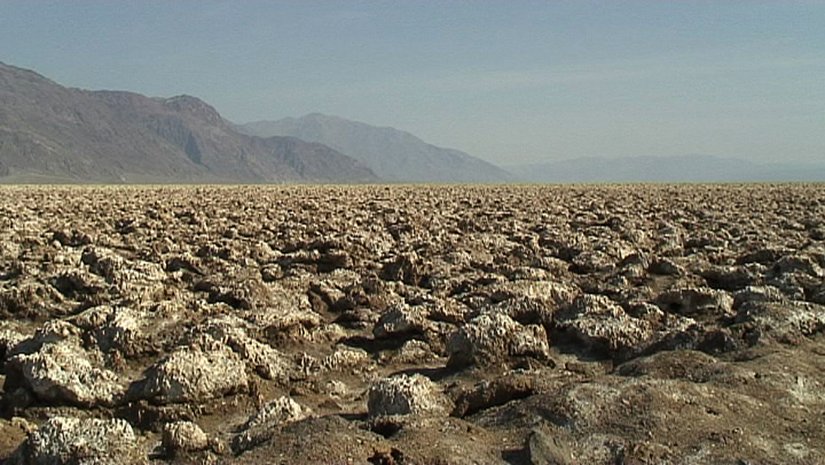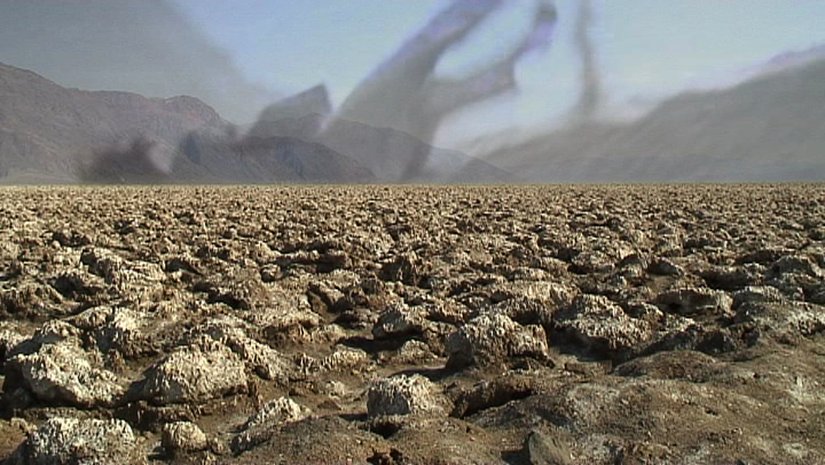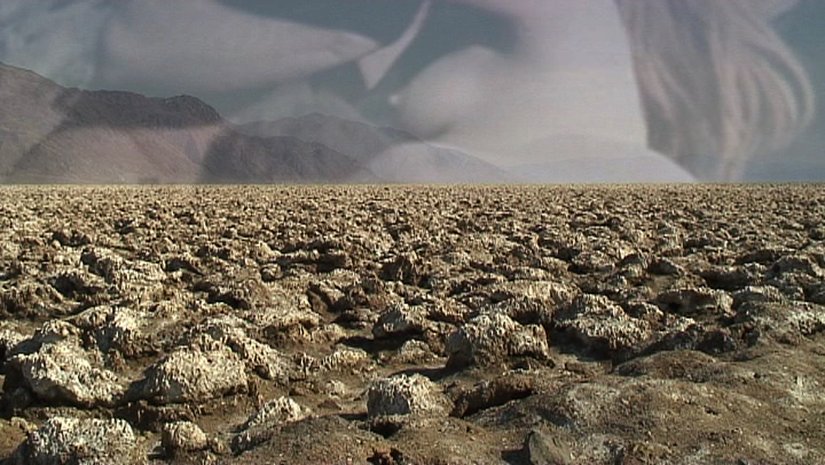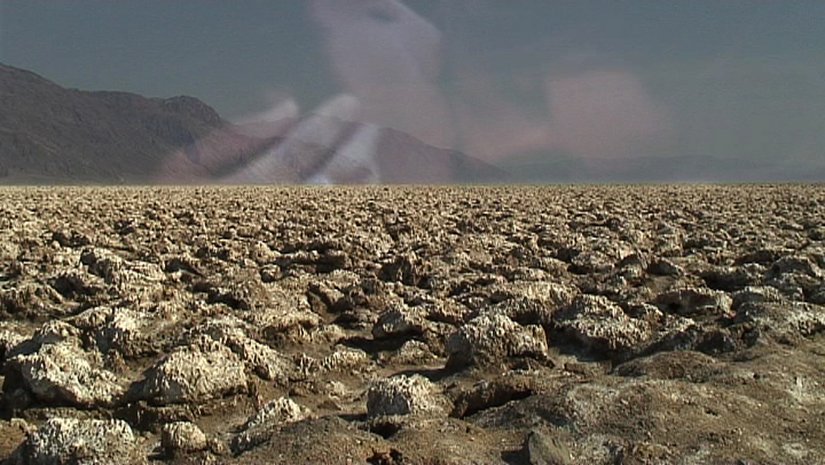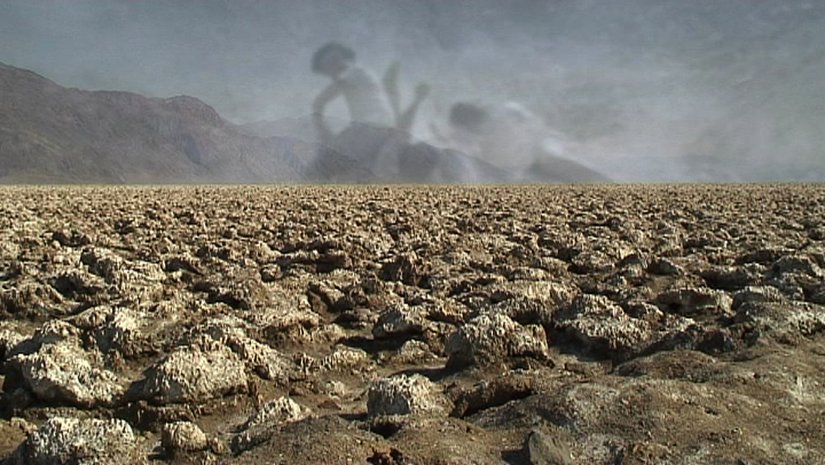
Zabriskie
06:56 min video loop with sound, 2010
projection
selected venues:
Aqua Art Miami (award winner)
"Zabriskie" entstand im Rahmen eines USA- Stipendiums des Berliner Senats.
Der Titel der Arbeit spielt sowohl auf den Film von Michelangelo Antonioni (1970), als auch auf den Aufnahmeort an; die abgebildete Salzwüste befindet sich unweit des Zabriskie Points im Death Valley.
"Zabriskie" was created during a U.S. scholarship from the Berlin Senate. The title alludes both to the film by Michelangelo Antonioni (1970), as well as to the recording location; the salt desert you see is close to Zabriskie Point in Death Valley.
Die Projektion zeigt eine endlose Salzwüste über der die Hitze flimmert. Die Landschaftsaufnahme wird begleitet von Geräuschen, die an einem anderen Ort aufgezeichnet wurden: im Vorführraum eines Kinos. Sobald sich die Lichtklappe des Filmprojektors öffnet (akustisch), wird der Himmel zur Projektionsfläche (visuell); am Horizont erscheint eine Schlüsselszene des Antonioni Films, in der sich die beiden Hauptakteure beim Liebesspiel im Wüstensand plötzlich zu vervielfachen scheinen und Teil einer Orgie werden.
Der Mythos „Wüste“ taucht als semantisch vieldeutiger Topos in der Filmgeschichte auf, von lebensfeindlichem (Stroheims „Greed“,1925) bis schicksalhaftem Ort (Pasolinis „Teorema“), als Inbegriff von Ursprünglichkeit (Hoppers „Easy Rider“, 1969), verdrängter Vergangenheit (Lynchs „Lost Highway“,1996) und Katharsis (Antonionis „Zabriskie Point”).
ZABRISKIE fokussiert das Thema der Fata Morgana, die Realität und Illusion verschwimmen lässt und beleuchtet das Motiv “Wüste” als kulturhistorisch divergierenden Bedeutungsträger. Präsentiert vor allem in Roadmovies und surrealistischen Experimental- und Science Fiction- Filmen, wird die Wüstenlandschaft zum Spiegel des subjektiven Empfindens, zum Zeichen von Authentizität, Individualisierung und Loslösung aus gesellschaftlichen und urbanen Strukturen.
The image of the desertscape is accompanied by sounds that were recorded in a different place: in the projection room of a movie theatre. Once the flap of the projector opens (acoustically), the sky becomes a projection screen (visually) and the wide horizon shows the key scene of Antonionis film where the two main actors seem to multiply while lovemaking in the desert sand and thereby become part of an orgy.
The myth of “desert” appears to be a semantically ambiguous theme in film history, it emerges from a hostile (Stroheim’s “Greed”, 1925) and fateful place (Pasolini’s “Teorema”), to the epitome of authenticity (Hopper’s “Easy Rider”, 1969), repressed past (Lynch’s “Lost Highway”, 1996) and catharsis (Antonioni’s “Zabriskie Point”).
ZABRISKIE also focuses on the idea of the Fata Morgana, where reality melts into illusion, and illuminates the culturally divergent meaning of “desert”. Presented primarily in experimental and surrealist road movies and science fiction movies, the desert landscape mirrors subjective feelings, becomes a sign of authenticity, individuality and detachment from social and urban structures.
